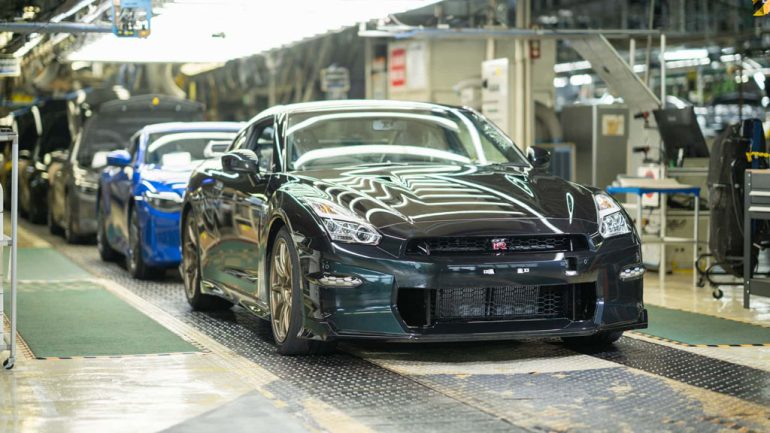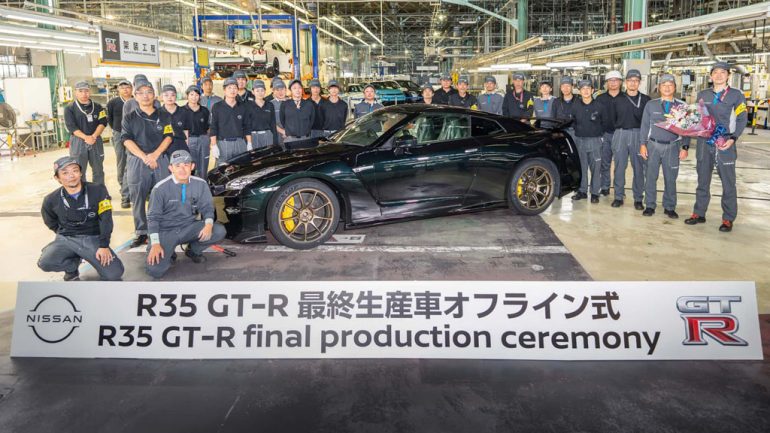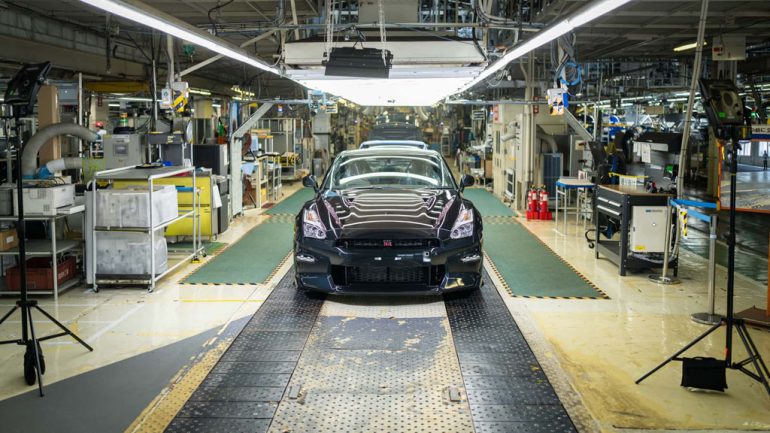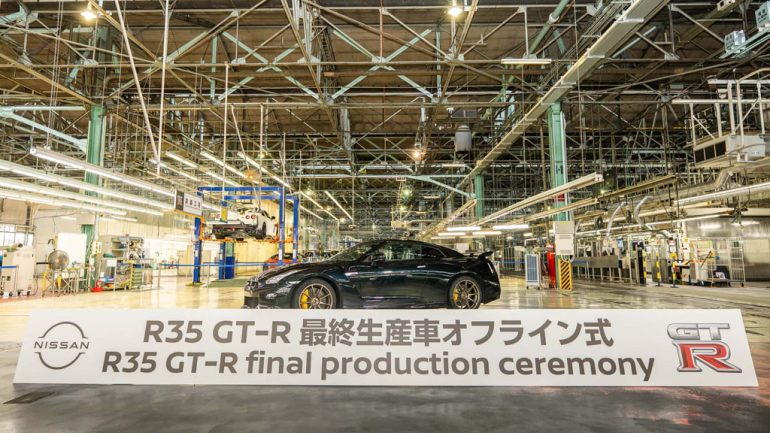Automotive

Eighteen years after it shocked the supercar world, the R35 Nissan GT-R has crossed the finish line. The final car is a Premium T-Spec painted Midnight Purple, assembled at Nissan’s Tochigi plant and headed to a customer in Japan, a fitting bookend for a machine that spent nearly two decades punching far above its price. Nissan says roughly 48,000 R35s were built, making it the most prolific GT-R generation yet.
If you are thinking this feels more like an intermission than the end credits, Nissan agrees. Senior executive Ivan Espinosa addressed fans directly, saying this is not goodbye forever and that the GT-R name will one day return. The message is clear even if the timeline remains unscripted, and it signals that the badge has a future once the company is ready.

The R35 earned its legend by democratizing supercar performance. Its advanced all-wheel-drive control, rear transaxle layout, and twin-turbo VR38DETT V6 turned launch-control clips and lap times into internet folklore while still feeling usable on a commute. Every engine was hand built by a small cadre of master technicians known as takumi, an old-school touch that fit the car’s giant-killer ethos and helped cement its cult status among tuners and track rats.
As regulations tightened and the platform aged, Nissan peeled the GT-R back market by market. Europe lost it first due to stricter noise rules, Australia bowed out over changing side-impact standards, and North America saw production end after the 2024 model year. Japan later closed order books, setting the stage for today’s curtain call and affirming that the R35’s marathon run had finally reached its natural conclusion.

What rises next is the real intrigue. Nissan has already sketched a direction with the Hyper Force concept, an outrageous all-electric showpiece that pairs e-4ORCE all-wheel control with solid-state battery tech and a claimed 1,000 kW of output. It reads like a sci-fi postcard from the future and shows Nissan is comfortable imagining a GT-R that runs silent and very quick, without compromising the nameplate’s obsession with repeatable performance.
Not every scenario for R36 points to a fully electric path. Nissan product planners have hinted that a hybrid bridge is likely, a pragmatic blend of combustion charisma and instant electric torque that also navigates tightening global regulations. That approach would give engineers room to evolve the driving character fans expect while preparing the platform for a longer horizon of electrification.
Reality inside Nissan helps explain why patience will be required. The company is pushing hard on cost discipline, consolidating platforms and reducing complexity to get healthier and more competitive. A halo car can lift hearts and brand image, yet it will not balance a spreadsheet overnight. The smart play is to time the next GT-R so it lands with the right tech, the right margins, and the right regulatory runway.

Even with the final R35 now spoken for, its cultural shadow is long. Early cars embarrassed pricier exotics, tuners discovered near-comical headroom in the VR38, and the GT-R became a gateway myth for a generation raised on racing games and YouTube. That blend of repeatable speed and daily civility is what the next one must honor, whether electrons or octane do the heavy lifting.
So yes, this is goodbye to one era and a quiet nod to the next. Nissan’s leaders keep saying the GT-R will return, and multiple voices inside the company confirm that people are working on it. The badge that redefined attainable speed is too valuable, and frankly too beloved, to disappear. The R35 just reminded the industry what a relentless, clever, data-driven sports car can do. Now the question is how Nissan rewrites that playbook for a world accelerating toward electrification.
FOLLOW US TODAY:

Lloyd Tobias is a seasoned automotive journalist and passionate enthusiast with over 15 years of experience immersed in the world of cars. Whether it’s exploring the latest advancements in automotive technology or keeping a close pulse on breaking industry news, Lloyd brings a sharp perspective and a deep appreciation for all things automotive. His writing blends technical insight with real-world enthusiasm, making his contributions both informative and engaging for readers who share his love for the drive. When he’s not behind the keyboard or under the hood, Lloyd enjoys test driving the newest models and staying ahead of the curve in an ever-evolving automotive landscape.


